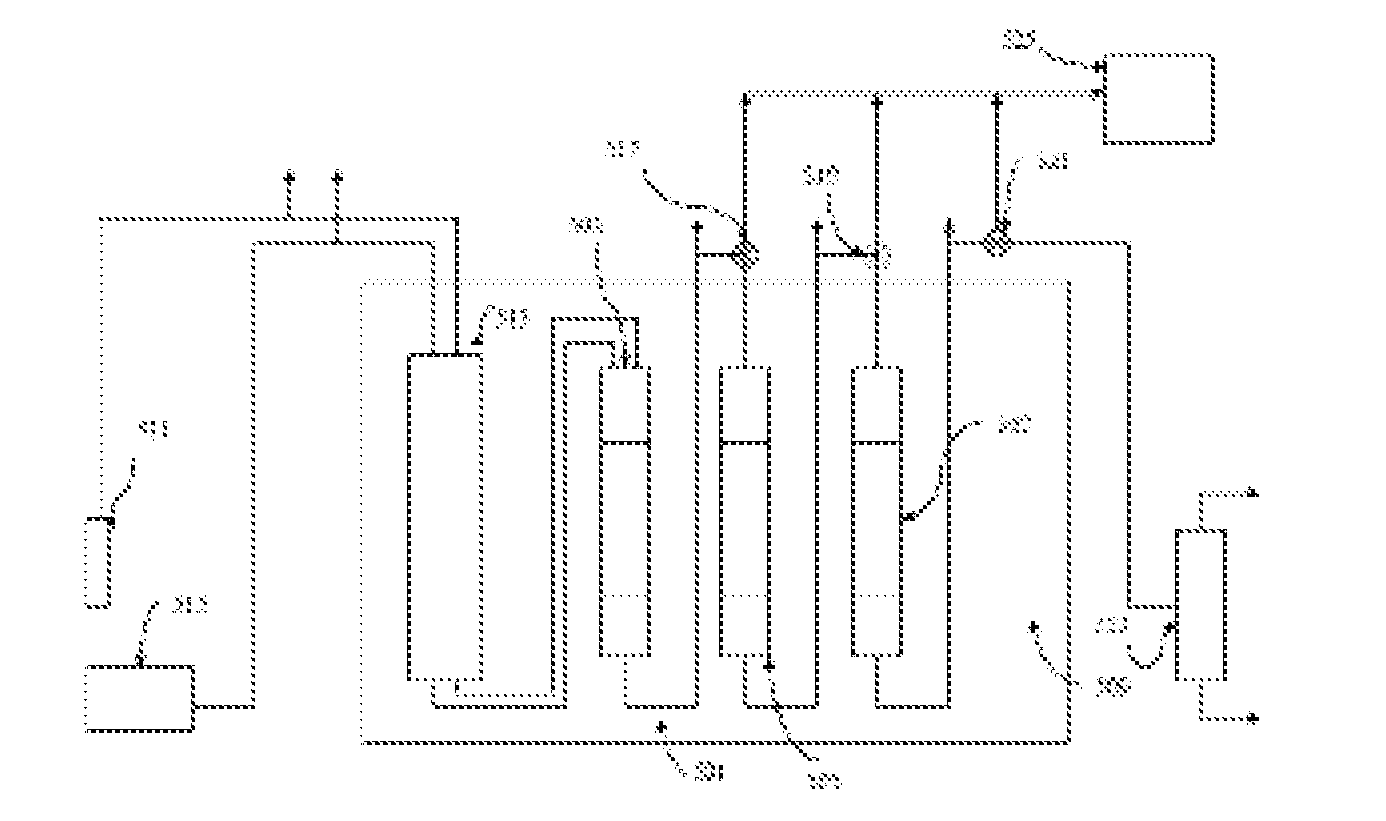High throughput development method for catalytic hydroprocessing of dirty feedstocks
a technology of catalytic hydroprocessing and high throughput, which is applied in the direction of sequential/parallele process reactions, laboratory equipment, chemistry apparatus and processes, etc., can solve the problems of low reaction rate, selectivity loss, and insufficient and quantitatively addressed open hds literature, and achieve high productivity and selectivity , the effect of low cos
- Summary
- Abstract
- Description
- Claims
- Application Information
AI Technical Summary
Benefits of technology
Problems solved by technology
Method used
Image
Examples
Embodiment Construction
[0034]Referring to FIG. 1 of the drawings, the composite multistage laboratory scale plug flow reactor 11 of a first embodiment of the invention is made up of three series-connected plug flow stages 13, 15 and 17, in this case fixed bed stages, each of which contains a bed of catalyst particles 19, 21 and 23. A sampling valve 25 is connected between the output of the first reactor stage 13 and the input to the second reactor stage 15 and has an output 26 for sampling the effluent from the first reactor stage 13 for analysis. A sampling valve 27 is connected between the output of the second fixed bed reactor stage 15 and the input to the third fixed bed reactor stage 17 and has an output 28 for sampling the effluent from the second reactor stage 15 for analysis. A sampling valve 29 is connected to the output of the third fixed bed reactor stage 17 and has an output 30 for sampling the effluent of the third reactor stage 17 for analysis. The output of the third reactor stage 17 is con...
PUM
 Login to View More
Login to View More Abstract
Description
Claims
Application Information
 Login to View More
Login to View More - R&D
- Intellectual Property
- Life Sciences
- Materials
- Tech Scout
- Unparalleled Data Quality
- Higher Quality Content
- 60% Fewer Hallucinations
Browse by: Latest US Patents, China's latest patents, Technical Efficacy Thesaurus, Application Domain, Technology Topic, Popular Technical Reports.
© 2025 PatSnap. All rights reserved.Legal|Privacy policy|Modern Slavery Act Transparency Statement|Sitemap|About US| Contact US: help@patsnap.com



